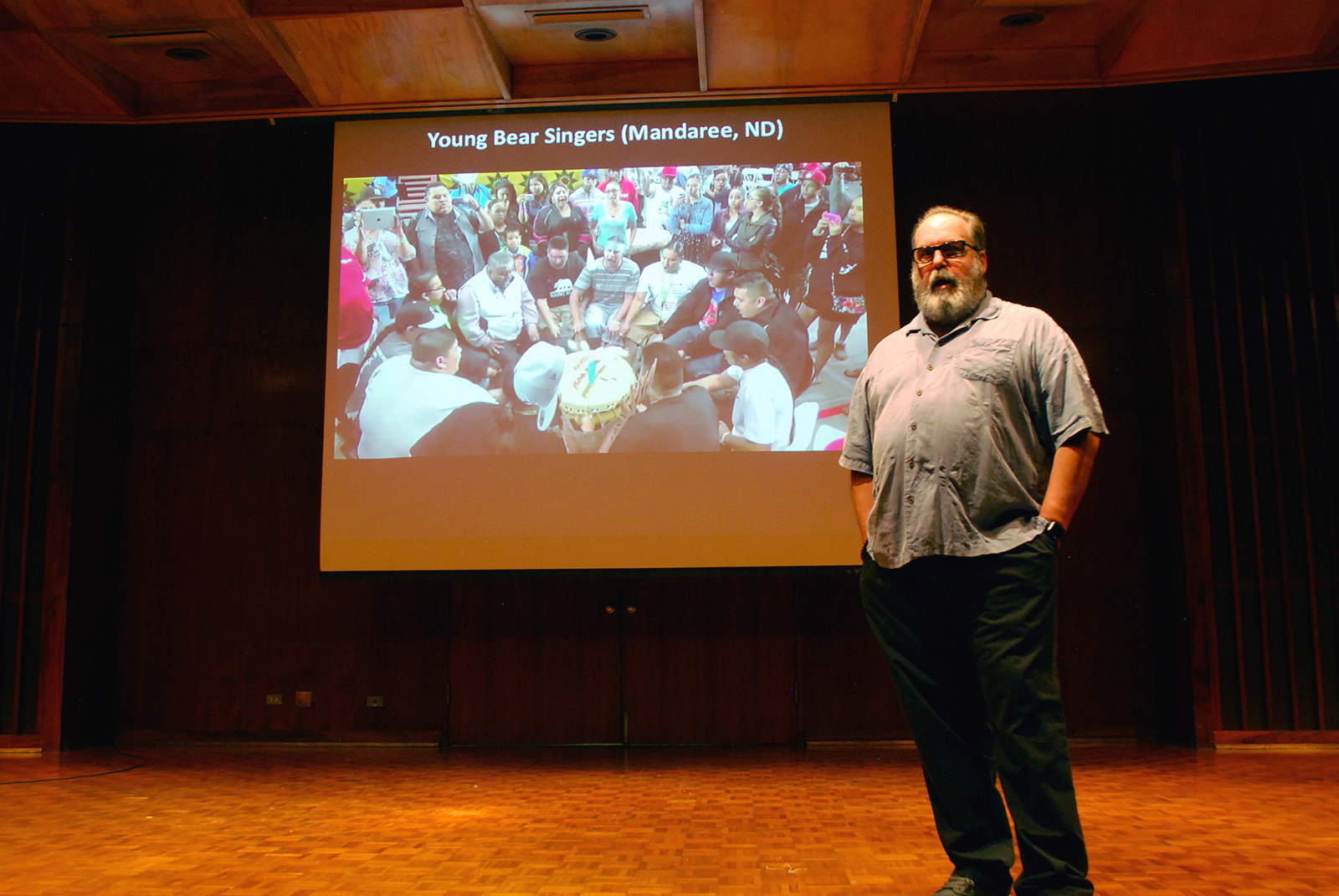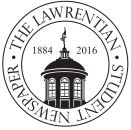James E. Cunningham, Ph.D. lectures about Native American cultural traditions in Harper Hall.
Photo by Kiran Mufty
On Monday, Oct. 10, James E. Cunningham, Ph.D. gave a talk on pop music and how it relates to tradition in Native American culture. While Cunningham’s delayed flight prevented him from speaking the previous Monday, rescheduling the lecture to the following week surely satisfied attendees after a week of anticipation.
The lecture on Monday night first began with the Dean of the Conservatory of Music Brian Pertl introducing Cunningham as his old classmate in graduate school at the University of Washington, where they both studied ethnomusicology. Cunningham then made his way up to the stage and began his talk with several questions, the first being “What is tradition?” He then brought up several points, ending by saying that he believed a good working definition of tradition was “the notion of the past carried forward into the present.” Tradition, according to Cunningham, is dynamic and not forever unchanged like many believe.
Cunningham then began to talk about the history of the powwow as a Native American ritual celebration. While the powwow is based on 19th-century Plains’ music and dance culture, the modern powwow actually traces lineage from the Wild West Show of the late 1800s. The contemporary powwow as we know it actually originated in the 1950s, post-World War II. Although the ties to tradition make the powwow seem as if it is an old and unchanged celebration, it is actually ever-changing and dynamic.
Next, Cunningham began to explain popular music in regards to a spectrum where folk music is on one side and artistic music is on another. While popular music can seem more like folk or more like art, it mostly exists in the middle between the two genres. Cunningham then began to describe pop music through the music made by several popular Native American artists. Jim Pepper’s “Witchi Tai To” was a great example—blending Native American language, musical elements, and themes into a song that became a Top-40 radio hit in 1969.
Cunningham showed how Native American popular music displayed visual and aural representations of indigenous culture through several themes of origin, group interaction, creative choice and especially humor. Cunningham went on to give several more examples of Native American popular music that portrayed indigenous culture through music, ending in the current era.
Cunningham’s lecture on “Native American Popular Music as Cultural Expression” showed several musical artists’ extreme dedication to their art and left the crowd with something many had not connected to before by citing relevant examples of Native American popular music today and from almost 50 years ago.


